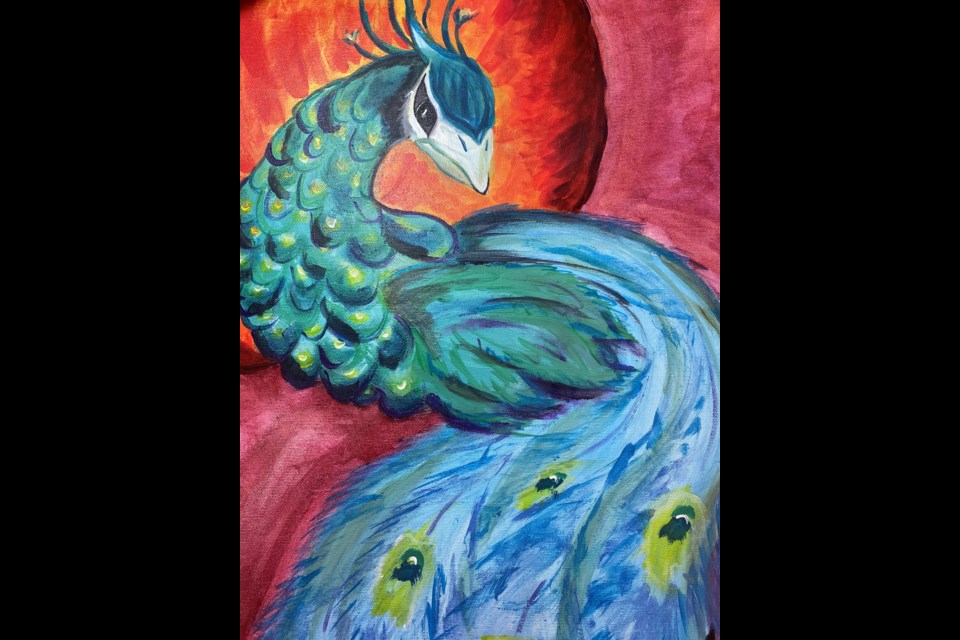Annice Johnson began college with the intention of becoming a neurosurgeon. Life, however, had other plans.
"As I was leaving high school and entering college, I developed some chronic illnesses that caused muscle twitching. So, surgery was off the table," Johnson said.
Her college required some extra classes to be well-rounded students including opportunities to study art and psychology. The classes were very competitive to get into without declaring yourself an art major, so despite not expecting to pursue art as a career, Johnson did so.
"I was taking psychology and then taking art classes just for self-care within my heavier course load. Somehow, I figured out I actually liked psychology and I actually liked art in a more serious way and combined the two. It was an accident and not an intention, but I think I innately knew I needed art," Johnson said.
She struggled with which direction to go, thinking she had to make a choice between art and the more scientifically-oriented study of psychology but someone showed her another way.
"At some point, somebody introduced me to the idea of art therapy. That it's not necessary to pick either creative or to pick scientific; they actually meld very well together. So, from that point on, I realized that sounds like that's me. I'll take all the above," Johnson said. She finished with dual degrees from the University of Mary Washington in psychology and studio fine art.
Johnson came to Colorado from Virginia in 2008 because she was accepted into Naropa's Master of Arts (MA) in Clinical Mental Health Counseling, with a concentration in Transpersonal Art Therapy.
Now, in her business Center for Creative Conversations, she helps people by "giving them a visual language of their emotions," Johnson said.
One example is a client describing what their emotions feel like and then creating art around it.
"When we're emotional, it's very hard to even say, 'Oh, I'm feeling angry right now.' but if the client says, 'I can feel this pointed rigidity in my body, and everything is starting to feel very edgy, I can notice I'm getting angry before it starts to feel out of control.' Then, visualizing calming colors, like a blue wave, for example, in addition to the artwork, is really powerful" Johnson said.
Johnson used a similar process as she experienced a re-grieving process about her father's death.
"I was processing my father's death in my twenties. He had died when I was much younger, but I handled it as a child at child level. I was really grieving and processing what it meant to me as an adult to have lost my father so young," Johnson said. "I was using artwork to do that. And any time, including some of my depressive episodes in college, I just worked through it with art. I was seeing a therapist. Though she was not an art therapist, I was bringing her my artwork in order to discuss my feelings because, without the art, I couldn't express them."
Johnson loves painting — particularly acrylics and oils — but has an even deeper passion for collage due to its accessibility and the "no rules" aspect of it.
"I really like collage. There are multiple steps to it," Johnson said.
The ripping of paper can help express when she's unsettled but also help her settle herself.
Johnson said, "My husband has even joked that he used to be able to tell when I was frustrated or stressed out at school, because that was my ripping and tearing stage. I'd just open up magazines and rip pictures out. Then, when I was a little bit more settled, I'd go back through and cut the images. Initially, I wasn't even trying to make artwork. I was just going through magazines and pulling, thinking 'that's a cool color or I like that image or that's an interesting juxtaposition."
One reason Johnson likes using collage for both herself and her clients is the opportunity to grant permission.
"I think both for myself and for clients, it's about permission-giving. There are no real rules in art. You have permission to play, you have permission to make things ugly, you have permission to make something transformed," she said.
Johnson said the permission found in creating art can also give people permission in other areas of life.
"It's allowing yourself permission, and then taking that outside of artwork and applying it to life. So that we have permission to be authentic and who we are. We can share our ugly feelings and that's okay and we have permission to transform," Johnson said.



